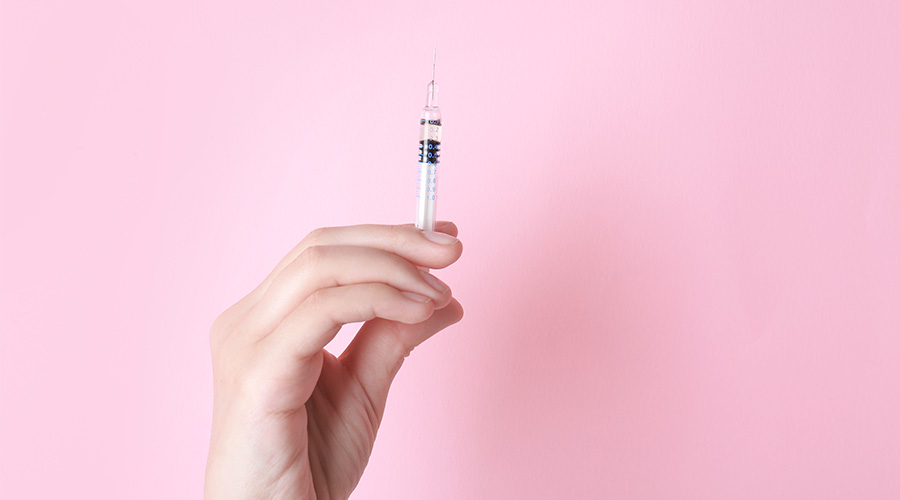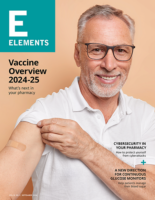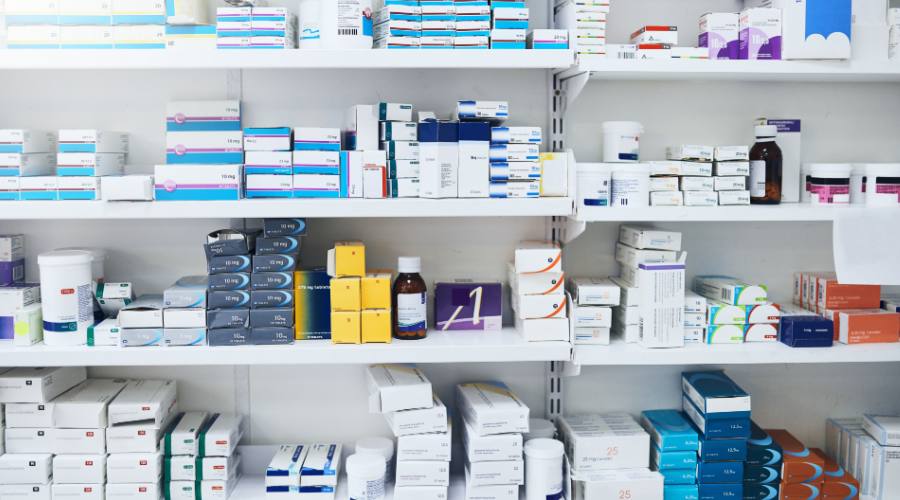Maximize your profit by increasing immunization sales with smart strategies from pharmacy owners who have been doing it for decades. Independent pharmacy owner Beverly Schaefer and director of immunization services Marty Feltner provide tens of thousands of immunizations every year, and their independent pharmacies have become immunization destinations. Use these tips compiled from their expertise and current research to get most money from your immunization program.
1. Start the Conversation
Starting the conversation is the most important part of increasing immunizations, Schaefer said. “There’s lots of topics that you can choose to start a conversation about immunization—travel, staying healthy, new vaccines. Even if people don’t do it right then, it plants a seed in their brain. And it gets word-of-mouth going.”
2. Put a Sign on the Door
For Schaefer, a simple sign is the first and most important step in marketing your services. This has been her single most successful strategy for increasing immunizations. On the sign, list all the immunizations you offer. “When we did this, people were totally amazed that we were doing all these shots,” she said.
3. Educate Patients
According to the CDC, education remains the largest barrier to immunization coverage. Simply informing patients about the preventable diseases and the vaccines that prevent them is an easy way to increase immunization rates. Use in-store signage, brochures from manufacturers, bag inserts, or a conversation.
4. Make Specific Recommendations
Asking the right patients about the right vaccines will give you a higher conversion rate. That involves identifying eligible patients and recommending the specific vaccine to them directly. For example, if the patient is over 50, simply let them know: Nearly 40 percent of people who have had chickenpox will get shingles. Offer to give them the vaccine right then and there.
5. Target Flu Shot Patients
Patients who get the flu shot have already shown an openness to immunizations, which means they’ll be much more inclined to accept further vaccines, according to a 2018 study published in Psychological Science in the Public Interest (PSPI). When patients come in for flu shots, have them fill out an intake form and ask about the last time they received other recommended vaccines.
6. Make Strong Recommendations
The PSPI study also discovered that a strong recommendation from the provider is the single most powerful way to motivate someone to get vaccinated. Instead of asking if they would like the vaccine, tell them they’re eligible and that they can get it before they leave the pharmacy.
7. Identify Eligible Patients
Most pharmacy systems allow you to create an alert for patients when their profile matches a vaccine need, which most often is based on age. Feltner relies on his employees to know which patients to look for and when to recommend vaccines. “The big key is to delegate and to train your staff on how to recognize someone who is eligible,” he said. “Train your staff. Train your staff. Train your staff.”
8. Utilize Entire Staff
After a visit to a national chain, Feltner realized how effective it is to have every single staff member, no matter their role, ask patients if they’ve gotten a vaccine. The store’s cashier asked every patient at checkout if they had gotten the flu shot. If they said no, she directed them to the pharmacy. “I thought that was eye opening,” he said. “That’s part of the whole idea of delegating to your entire staff.”
9. Zero Copay Tactic
This trick has been wildly successful for Feltner: He keeps track of which insurance and government plans offer patients a zero copay for a vaccine. Any time his staff sees a patient with one of those plans, they make the recommendation and let the patient know the vaccine is completely free. At that point, it’s an easy sell.
10. Co-administration
Co-administering vaccines can also cause an uptick in vaccinations. Patients will be much more likely to receive multiple immunizations if they get them all in one stop rather than returning at another time. As long as the vaccines don’t have contraindications, you can safely administer multiple vaccines in one visit. Also consider ordering combination vaccines that contain multiple vaccines in one shot, which are even more convenient for patients and reduce your storage costs.
11. Offsite Events
“Pharmacists who are successful in immunizations are not limiting provision of vaccines to the walls of their practice,” said Mitch Rothholz, chief strategy offer at APhA.“They’re going out to businesses and doing immunizations in the community, whether it be an event or in private businesses.” Offsite events not only generate money from vaccines given at the event, they’re also a perfect opportunity to recruit new patients to your pharmacy for good. Good offsite opportunities include school systems, health fairs, local businesses, assisted-living communities, apartment-complex communities, police departments, churches, and colleges.
12. Employer Partnerships
A huge source of immunization revenue for Feltner’s practice site is corporate partnerships. He’s developed relationships with several corporations who send their employees overseas. All of those employees go to Kohll’s Pharmacy for travel immunizations, which usually involve multiple vaccines.
13. On-Air Advertising
Go live on the radio or TV and give flu shots. “Just make it fun,” Feltner said. “The big thing I tell pharmacists is make it fun. Then you’re having fun immunizing and preventing disease.”
14. Helping with Costs
The second biggest barrier to immunizations, according to the CDC, is cost. The agency recommends pharmacies consult with local and state public health vaccination programs to learn about publicly funded programs that could help patients with the cost of vaccines. You can also enroll in the Vaccines for Children Program, which provides pharmacies federally purchased vaccines to fully vaccinate eligible children.
15. Offer Coupons
Take a page from the national chain pharmacies and big-box stores. Give patients a small voucher or coupon to your front end when they get an immunization from you. The profit you earn from them will outweigh the gift.
16. Fax Physicians
After immunizing a patient, Schaefer sends a fax to the provider. The fax includes the entire list of vaccines she offers, with an X next to the vaccine she administered. That way, the physician will know every vaccine she offers and can refer patients to her in the future.
17. Word-of-Mouth
If you offer a top-notch immunization program, your patients and physicians will do the advertising for you. Both Schaefer and Feltner attributed their most successful marketing to word-of-mouth. In fact, Schaefer spends zero dollars on advertising.
18. Answering Machine
Use your answering machine to highlight your immunization services. “When you call my store, it’s ‘Hello, you’ve reached Katterman’s pharmacy, your immunization destination,’” Schaefer said. “That way they’re thinking about immunizations whether they want to or not.”
19. Incentivize Your Pharmacists
Schaefer said the high margins on immunizations allow you to pay a bonus to your pharmacists for each immunization they administer. For an immunization that earns $20, let your pharmacists take two to five bucks of that to give them extra motivation.
20. Travel Tricks
Travel vaccinations come with their own bag of tricks—all of which genuinely help the health of patients.
- Hold a consultation with patients to ask where they’re going, review their immunization history, and offer them everything they’ll need.
- Use Travax, an online resource, to identify every vaccine a patient will need for the area they’re visiting.
- Create a “travel checklist” with OTC items patients may need for the trip, which they can purchase in your front end.
- Compile a section in the front end dedicated solely to travel products and walk your patient through it after each consultation. Schaefer said it’s not uncommon for patients to spend an extra one to two hundred dollars on her OTC travel products.
- Put a sign on your front door: “Are you traveling out of the country? Have you had your hep A, yellow fever, and typhoid shots?”
- If a patient comes in asking for a specific travel vaccination, ask where they’re traveling. You may be able to offer additional immunizations or travel products.
- Get a standing order or collaborative practice agreement to administer prescription travel medicine, like antimalarial drugs.
An Independently Owned Organization Serving Independent Pharmacies
PBA Health is dedicated to helping independent pharmacies reach their full potential on the buy side of their business. The company is a member-owned organization that serves independent pharmacies with group purchasing services, expert contract negotiations, proprietary purchasing tools, distribution services, and more.
PBA Health, an HDA member, operates its own VAWD-certified warehouse with more than 6,000 SKUs, including brands, generics, narcotics CII-CV, cold-storage products, and over-the-counter (OTC) products.
Want more pharmacy business tips and advice? Sign up for our e-newsletter.












